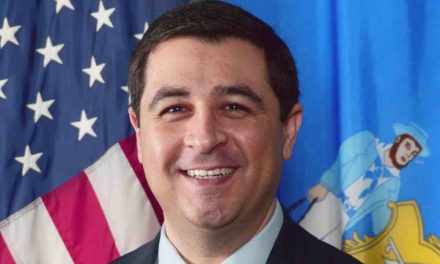
Hundreds of hospitalized Wisconsinites waiting for discharge to post-acute facilities

Hundreds of hospitalized Wisconsin patients are waiting for discharge to post-acute care as the state’s health systems grapple with a surge in COVID-19 patients and nursing homes face workforce issues.
“It’s a huge issue,” Wisconsin Hospital Association CEO Eric Borgerding said. “It’s not only an ongoing problem, but it’s certainly getting worse.”
WHA sampled their members last week and found 352 patients awaiting discharge to some type of long-term care facility. Borgerding said the number is likely closer to 400, after taking into account hospitals that weren’t included.
One health system a few weeks ago had 20 percent of inpatient staffed beds occupied by patients waiting for discharge to a long-term care facility. Another had over 150 patients awaiting discharge.
“God knows that we need those beds,” Borgerding said.
Hospitals faced similar issues during last fall’s surge. Borgerding said many of the challenges then – like staffing outages, COVID-19 outbreaks and workforce shortages – persist.
He added that hospitals serve as a safety net.
“It’s getting more and more difficult to do that,” Borgerding said, citing COVID-19 vaccination efforts, more demand for COVID-19 testing and now hospitals becoming “de facto nursing homes.”
As of the middle of last week, ThedaCare had around 20 patients across its system that could be discharged to a nursing home but the option wasn’t available, CEO Dr. Imran Andrabi said.
Part of the challenge has been bed capacity and not having nurses and other workforce availability at post-acute sites. Another challenge has been waiting for insurance approvals to move to another site.
“It’s complex,” Andrabi said. “But as you can imagine, those 20 patients, if they could have moved to the right place, it could have opened 20 additional beds for us to take care of people in the hospital.”
Wisconsin hospitals are trying to turn “every lever” to address the issue, which includes looking at ways inside the hospital to help support boarded patients and advocating for actions that could result in more staff at hospitals and long-term care facilities, Borgerding said.
The Office of the Commissioner of Insurance recently encouraged insurers to work to streamline processes and avoid prior authorization delays. WHA is also working with the Department of Safety and Professional Services to expedite pending healthcare licenses.
Long-term care providers say they understand hospital capacity concerns, but they face workforce challenges magnified by the COVID-19 pandemic.
“Our nursing facilities will not accept new admissions if they do not have the staff available to care for those individuals,” said LeadingAge Wisconsin CEO John Sauer.
Admissions haven’t shut down, Sauer said, and nursing homes are making day-to-day decisions on whether or not they can admit.
“They would take patients in a heartbeat if they could safely staff the beds,” said Rick Abrams, CEO of the Wisconsin Health Care Association and the Wisconsin Center for the Assisted Living.
Sauer said COVID-19 outbreaks also pose a challenge. State data show 217 active COVID-19 investigations at Wisconsin nursing homes last week, meaning that one or more staff or residents tested positive. There are around 356 nursing homes in the state, Sauer noted.
That has an impact on their ability to admit since they have to ensure that there’s no transmission of the virus actively occurring in the facility, he said. He said they’re looking at ways to streamline and clarify guidance to ensure if outbreaks are isolated to a wing or a staff member, they can still admit.
Nursing homes are using temporary workers and looking at ways to connect those looking for work to long-term careers to help fill staffing gaps, Sauer said.
They’ve reached out to see if Afghan refugees might be interested and talked to hospitals to see if they could “job-share staff” with nursing homes.
“We’re turning over every stone we can think of,” he said.
He added that he was on two recent emergency calls with state officials and his members, organized within hours, who were facing an “immediate, intense staffing crisis” where they strategized how to attract workers.
“That’s what it’s taking around the state,” he said.
Abrams said additional dollars heading to nursing homes and other long-term care facilities under the state’s 2021-23 budget will help, although the money hasn’t reached them yet due to the rate-setting methodology.
They’re also working closely with the Department of Health Services so the inspection process has “more empathy” for facilities, he said. That wouldn’t involve ignoring serious problems, but instead focus on taking pressure off of facilities and supporting efforts to prioritize providing care, he said.
His members are working with hospitals and the state’s long-term care and hospital associations are working together too, he added.
DHS spokeswoman Jennifer Miller said they’re “pursuing several strategies simultaneously to assist” providers facing surges.
Starting Monday, the agency began offering facilities supplemental temporary agency staffing.
“Everything is welcome,” Abrams said. He called the contract an “additional tool in the toolbox.”
Another long-standing issue is placing medically or behaviorally complex patients. Abrams said they’re looking for ways for additional payment, refining the survey process and working with hospital partners and DHS to address that challenge.
Sauer said that addressing the population would free up beds too. “But it’s going to take a special consideration about how and where and at what cost are we able to serve those individuals,” he said.
Borgerding noted persistent challenges for nursing home placements, relating to reimbursement and guardianship. He said some patients are more expensive in long-term care settings, and there’s interest in carving out certain costs for the patients.
“These are big issues,” he said. “They’ll take time to craft, they’ll take funding and it’ll take time to implement them – all things we don’t really have now.”
This article first appeared in the Wisconsin Health News daily email newsletter. Sign up for your free trial here.





